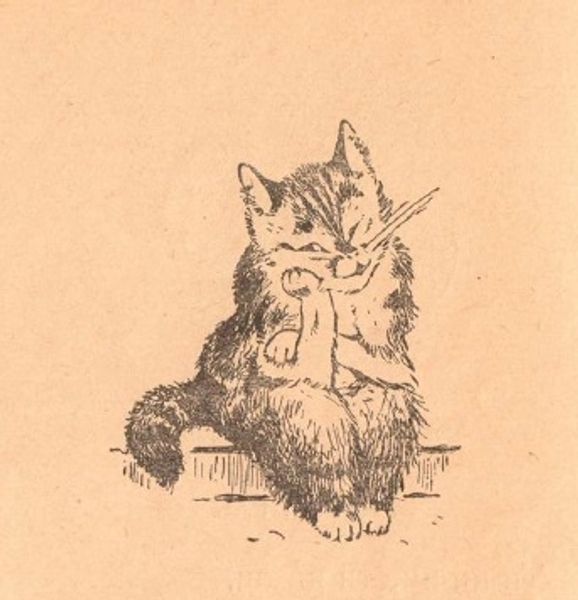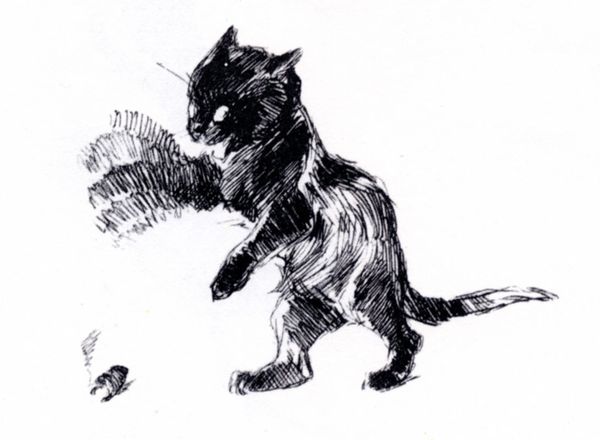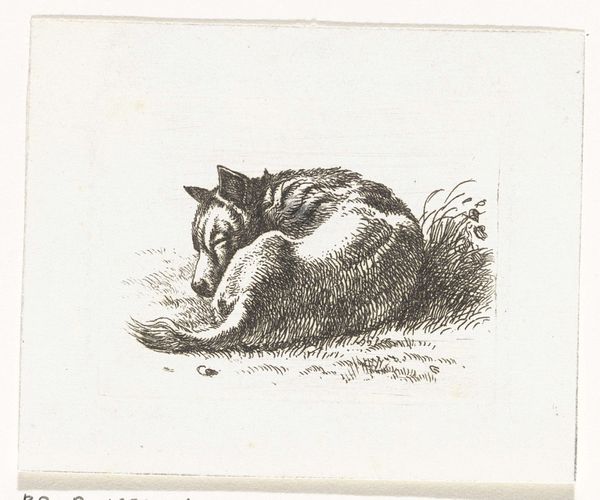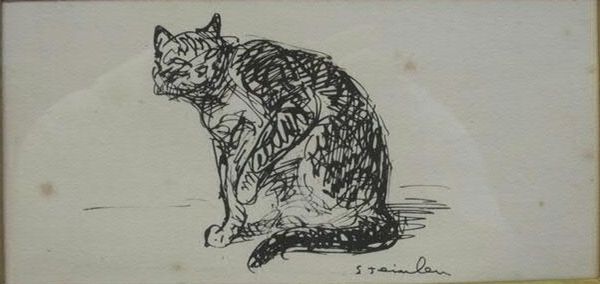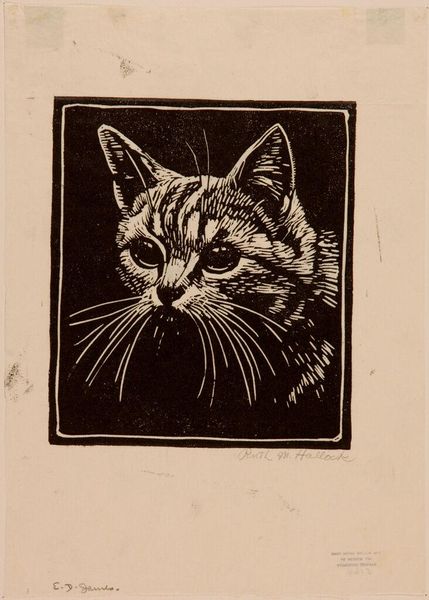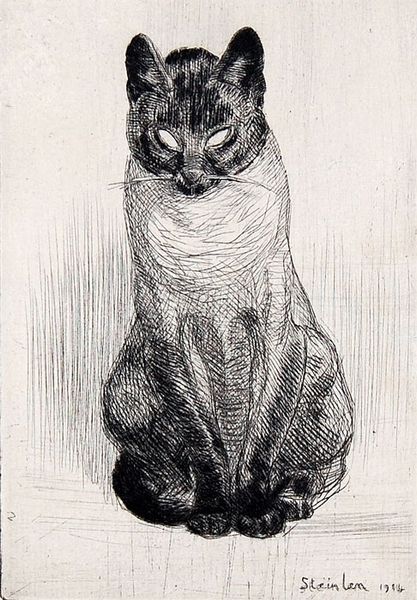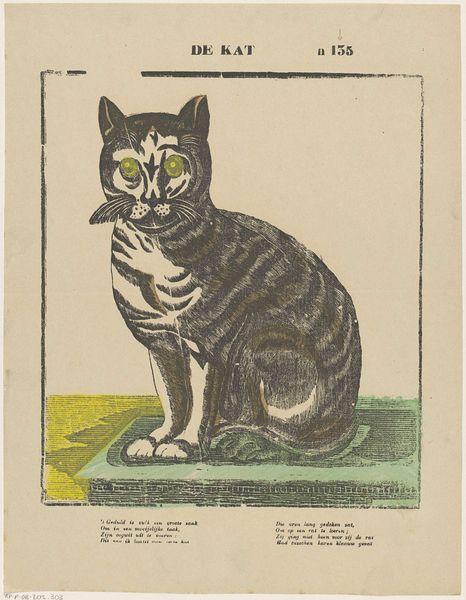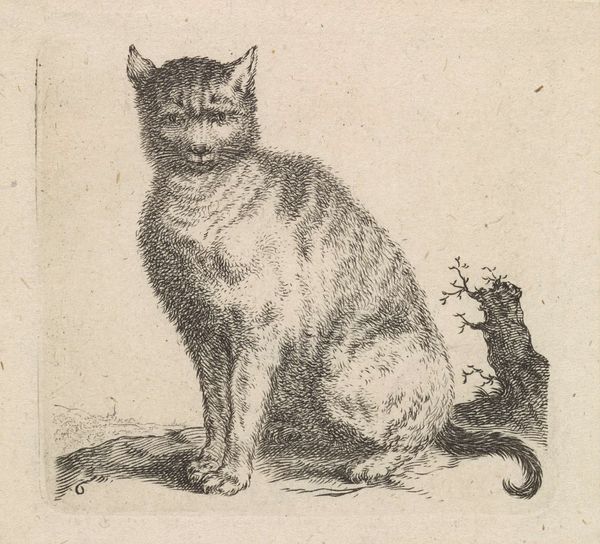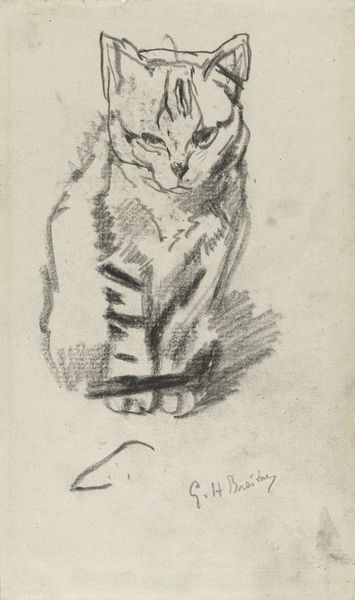
drawing, print, ink
#
drawing
#
comic strip sketch
#
imaginative character sketch
#
quirky sketch
# print
#
impressionism
#
figuration
#
personal sketchbook
#
ink
#
idea generation sketch
#
sketch
#
pen-ink sketch
#
line
#
symbolism
#
sketchbook drawing
#
sketchbook art
#
fantasy sketch
#
realism
#
initial sketch
Copyright: Public domain
Théophile Alexandre Steinlen created this black ink drawing of a cat, sometime between the late 19th and early 20th centuries. The cat stands in profile, its striped fur rendered with quick, confident strokes. Steinlen was a social realist, known for his depictions of working-class life in Paris and in his time, cats were common subjects in art, often used to symbolize domesticity or feminine wiles. However, Steinlen's cats, particularly the stray cats that roamed Montmartre, often served as symbols of urban poverty and social alienation. Here the cat's gaze and the slightly sardonic title of "Smiling Cat" suggest something beyond mere domesticity. Is it a commentary on the superficiality of bourgeois life? Understanding Steinlen's work requires us to delve into the social history of his time, examining the rise of urbanism, the plight of the working class, and the changing role of animals in society. We need to consider how institutions such as the art market and the popular press shaped both the production and the reception of his art.
Comments
No comments
Be the first to comment and join the conversation on the ultimate creative platform.
